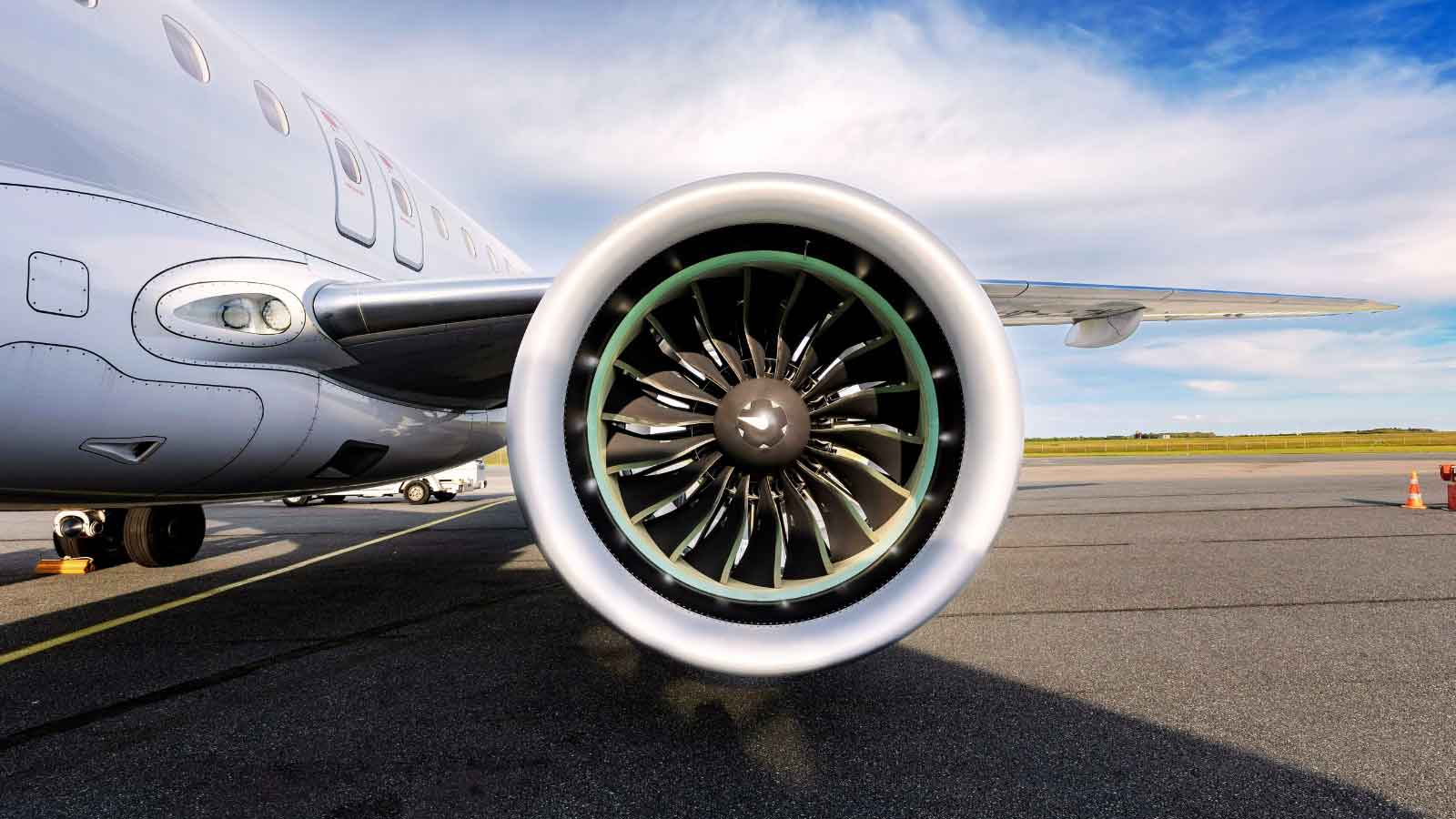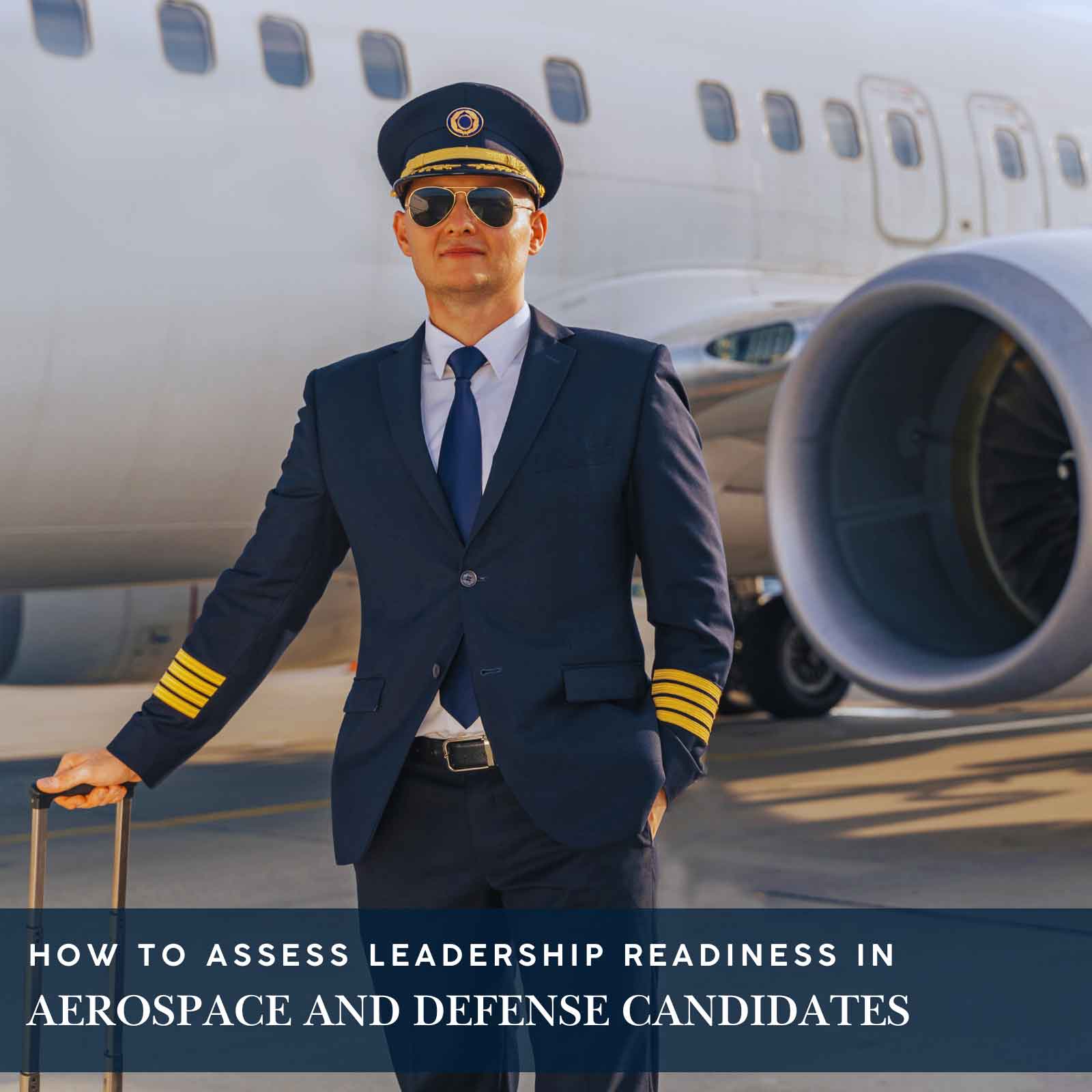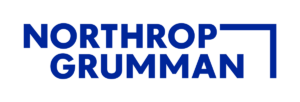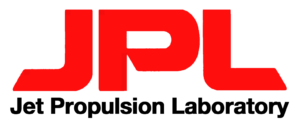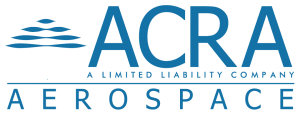The Future of Aerospace Leadership: What Skillsets Will Be In Demand by 2030?
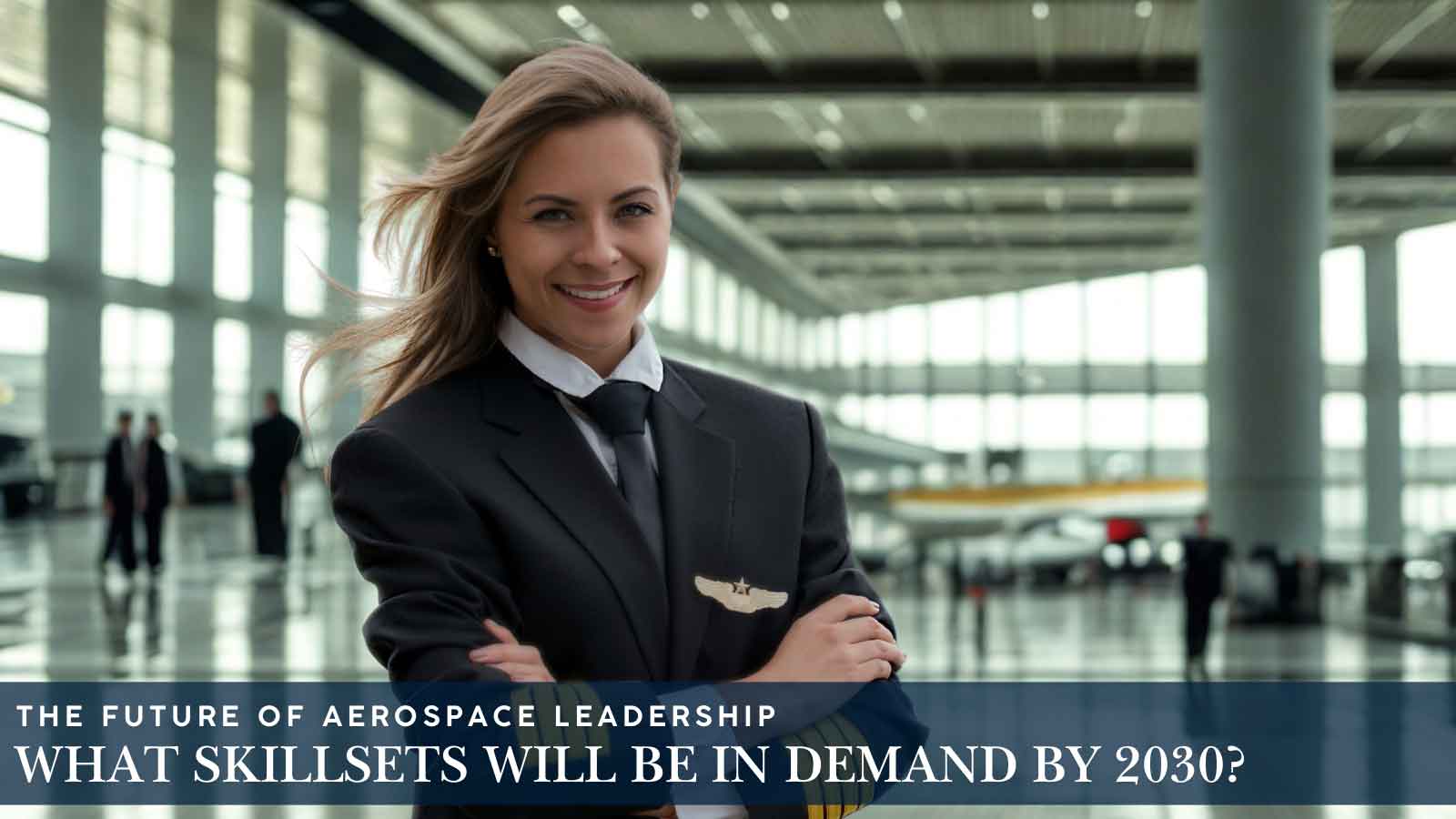
The aerospace industry faces an unprecedented transformation, where traditional leadership paradigms must adapt to revolutionary technological demands. Identifying executives who can skillfully integrate artificial intelligence, manage sustainability mandates, and thrive amidst market volatility is paramount.
In this dynamic environment, aerospace recruitment must evolve to secure leaders with both deep technical expertise and adaptive intelligence to drive digital transformation and ensure operational excellence today, preparing for the strategic landscape of tomorrow.
Identifying Digital-Savvy Aerospace Leaders
The aerospace sector’s digital revolution demands leaders who can seamlessly integrate emerging technologies into operational frameworks while maintaining rigorous safety standards.
Aerospace recruitment agencies must prioritize candidates who demonstrate fluency in data-driven decision-making, cybersecurity protocols, and digital system integration. These leaders will determine how aerospace companies leverage technology to gain competitive advantages and drive innovation across operational dimensions.
AI and Data Analytics Fluency
Modern aerospace leaders need more than surface-level knowledge of artificial intelligence, they must understand how to apply machine learning algorithms and predictive analytics platforms directly to mission-critical operations. Aviation recruiting now prioritizes executives who can turn complex data into actionable strategies that drive safety, efficiency, and profitability.
Key applications of AI and data analytics in aerospace include:
- Predictive Maintenance: Using AI-driven analytics to anticipate equipment failures, reduce aircraft downtime, and extend asset lifecycles.
- Autonomous Drones: Applying AI for unmanned aerial systems in surveillance, inspections, and cargo transport to improve safety and reduce human risk.
- AI-Assisted Air Traffic Control: Enhancing efficiency and reducing congestion through machine learning models that predict traffic patterns and optimize flight paths.
- Fleet Optimization: Leveraging big data to streamline fuel usage, scheduling, and operational costs across large commercial and defense fleets.
- Safety and Risk Management: Using AI to analyze historical flight and maintenance data to identify safety risks before they escalate.
Aerospace engineering recruiters look for leaders who understand these technologies and have proven experience implementing them in ways that deliver measurable returns, from lower operating costs to stronger regulatory compliance.
Cybersecurity and Risk Management
Aerospace leaders must proactively architect comprehensive security frameworks and deploy advanced threat detection systems to safeguard critical systems, intellectual property, and operational data from evolving cyber threats. Key considerations include:
- Protect sensitive aerospace IP: Secure design schematics, avionics software, and defense technology against unauthorized access or industrial espionage.
- Ensure operational continuity: Implement cybersecurity protocols for flight control systems, satellite operations, and unmanned aerial vehicle (UAV) platforms to prevent operational disruptions.
- Regulatory compliance and standards: Align risk management strategies with FAA, DoD, and ITAR cybersecurity requirements to avoid penalties and maintain contract eligibility.
- Candidate selection for leadership roles: Recruit executives with experience in integrating cybersecurity into procurement, manufacturing, and R&D processes.
- Build organizational resilience: Develop incident response plans for potential cyberattacks targeting flight operations, supply chains, or ground-based control systems.
- Cross-functional collaboration: Coordinate IT, engineering, and operations teams to identify vulnerabilities, implement preventative measures, and maintain continuous security monitoring.
- Continuous investment and adaptation: Stay ahead of emerging threats by updating software, training personnel, and adopting advanced threat detection technologies.
These strategies ensure aerospace companies protect their competitive advantage while maintaining mission-critical operations and industry credibility.
ALSO READ: Recruiting Leadership for Innovative Space Ventures: Aligning Skills for the New Economy
Sustainability and Green Innovation Champions
Environmental responsibility has evolved from a compliance requirement to a strategic imperative that drives innovation and competitive positioning in aerospace markets. Aerospace recruiters must identify leaders who can balance environmental stewardship with operational excellence and financial performance.
These executives recognize that sustainability initiatives generate long-term value while meeting stringent regulatory requirements and fulfilling stakeholder expectations.
Decarbonization Strategy and Execution
Aerospace leaders must drive net-zero emission initiatives while maintaining operational efficiency and profitability across complex supply chains and operational networks. Executive search firms specializing in aerospace recruitment focus on candidates who have successfully led sustainable aviation fuel adoption programs and the development of electric propulsion technology.
These leaders recognize that decarbonization necessitates strategic partnerships, technological innovation, and operational transformation on a scale unprecedented in history. The most successful aerospace executives demonstrate the ability to integrate environmental considerations into their core business strategies, driving both sustainability outcomes and financial performance.
Aerospace engineering recruitment agencies seek leaders who can champion the development of lightweight materials, hybrid propulsion systems, and circular economy principles within aerospace manufacturing and operations. These executives recognize that environmental innovation creates competitive advantages while meeting regulatory requirements.
Regulatory Navigation and Compliance
Modern aerospace executives must strategically manage evolving regulations while maintaining operational efficiency. Key considerations include:
- Environmental compliance for manufacturing: Ensure aerospace manufacturing facilities meet FAA, EPA, and state-level environmental standards when producing aircraft components, jet engines, or UAVs.
- Sustainability in operations: Integrate sustainable aviation fuels, carbon reduction initiatives, and energy-efficient facility upgrades into corporate strategy without disrupting production schedules.
- Candidate selection for leadership: Recruit executives who translate regulatory mandates into actionable policies for engineering, supply chain, and operational teams.
- Green technology partnerships: Build collaborations with clean-tech firms to co-develop lightweight materials, emissions-reducing engines, or recycling programs for aerospace components.
- Stakeholder management: Navigate complex relationships with FAA, environmental agencies, and international regulators to secure certifications and approvals for new aircraft or technology.
- Risk mitigation and strategy alignment: Align compliance efforts with business goals to minimize fines, production delays, or reputational risks while identifying opportunities for innovation.
- Industry transformation leadership: Drive initiatives that set new environmental standards in aerospace, positioning the company as a leader in sustainable aviation practices.
These strategies ensure aerospace companies comply with regulations and leverage compliance as a competitive advantage and innovation driver.
Advanced Technical Systems Leadership
The aerospace industry’s technological complexity requires leaders who can bridge technical innovation with business objectives while managing increasingly sophisticated and interconnected systems. Aerospace recruiters must identify executives who possess deep technical understanding combined with strategic business acumen.
These leaders recognize that technical excellence must be translated into operational efficiency, safety improvements, and a competitive edge.
Systems Engineering and Integration
Aerospace leaders must manage complex, interconnected systems across multiple disciplines, suppliers, and operational environments. Executive search services focus on identifying candidates who excel in these areas, with responsibilities and examples including:
- Integrating autonomous and traditional systems: Successfully combine UAVs with manned aircraft operations to optimize fleet performance and mission readiness.
- Implementing advanced control technologies: Deploy fly-by-wire systems, avionics updates, and propulsion controls across commercial aircraft and defense platforms.
- Cross-disciplinary coordination: Align engineering, software, avionics, and maintenance teams to ensure seamless system functionality throughout development and operations.
- Supplier and vendor collaboration: Incorporate components from multiple global suppliers while maintaining compliance with FAA and ITAR regulations.
- Translating technical complexity: Communicate intricate engineering designs and system dependencies to executives, investors, and regulatory bodies to support strategic decision-making.
- Maintaining operational excellence: Ensure integrated systems meet rigorous safety, performance, and financial objectives while supporting continuous improvement initiatives.
- Adapting to emerging technologies: Stay ahead of industry trends by integrating AI-driven predictive maintenance, additive manufacturing, and next-generation control systems into operational workflows.
Emerging Technology Adoption
Modern aerospace leaders must implement software development and engineering practices that accelerate innovation while maintaining strict quality and safety standards. Executive search services focus on identifying candidates who excel in emerging technology adoption, including:
- Digital twin technology implementation: Leading the creation of virtual replicas of aircraft systems to optimize performance, maintenance, and lifecycle management.
- Simulation and modeling capabilities: Developing high-fidelity flight simulators for pilot training, mission rehearsal, and testing autonomous or unmanned aircraft systems.
- Unmanned systems innovation: Integrating drones and autonomous vehicles into existing aerospace operations, balancing operational efficiency with safety compliance.
- Space technology advancements: Driving satellite design, propulsion innovation, and orbital vehicle integration while adhering to regulatory standards.
- Organizational change management: Leading teams through technology adoption, ensuring engineers, operators, and support staff are trained and aligned with new digital systems.
- Risk mitigation and regulatory compliance: Anticipating technical and safety risks while ensuring compliance with FAA, ITAR, and international aerospace regulations.
- Workforce development for emerging tech: Recruiting and mentoring engineers and executives who can adapt to AI, machine learning, additive manufacturing, and next-gen control systems.
Human-Centric and Adaptive Leadership
The Aerospace and Defense (A&D) industry is facing a global shortage of semiconductor engineers, projected to exceed one million by 2030, making human capital development critical for industry success. Aerospace recruitment agencies must identify executives who combine technical expertise with exceptional interpersonal skills and adaptive leadership capabilities.
These leaders recognize that human capital is the industry’s most valuable asset and a key competitive differentiator.
Emotional Intelligence and Team Dynamics
Aerospace leaders must build trust and inspire diverse, multicultural teams while leading organizations through digital transformation and operational change. Aerospace recruiters focus on candidates who demonstrate proven ability to foster collaboration across cross-functional aerospace disciplines and complex organizational structures. These leaders recognize that emotional intelligence is a key driver of organizational performance and innovation capabilities.
The most successful aerospace executives create inclusive environments that leverage diverse perspectives and expertise to drive innovation and problem-solving. Executive search firms seek leaders who can navigate cultural differences, generational gaps, and technical specializations while maintaining organizational cohesion and performance. These executives recognize that team dynamics have a direct impact on operational excellence, safety outcomes, and competitive positioning.
Talent Development and Succession Planning
Modern aerospace leaders must bridge the aerospace skills gap through strategic talent development and knowledge transfer initiatives. Aviation recruiting processes prioritize candidates who have successfully created inclusive cultures that attract top-tier talent and retain critical expertise. These leaders understand that talent development requires long-term strategic planning and substantial investment in human capital.
The most effective aerospace executives develop next-generation leaders who can drive aerospace innovation while maintaining operational excellence and safety standards. Aerospace engineering recruitment agencies focus on leaders who can balance immediate operational needs with long-term talent development objectives. These executives recognize that succession planning represents both a risk mitigation strategy and a competitive advantage in attracting and retaining top talent.
Strategic Agility and Market Intelligence
The aerospace industry’s volatility requires leaders who can identify emerging opportunities while adapting business models to technological and market shifts. Executive search services must identify executives who combine strategic vision with operational excellence and adaptive leadership capabilities. These leaders recognize that market intelligence informs strategic decision-making and drives competitive positioning.
Entrepreneurial Vision and Opportunity Recognition
Aerospace leaders must identify emerging market opportunities while adapting business models to technological innovations and global market shifts. Executive search services focus on candidates who demonstrate entrepreneurial vision and a track record of actionable results, including:
- Global supply chain partnerships: Building alliances with international component suppliers to accelerate production of commercial aircraft and defense systems.
- Emerging market entry: Expanding unmanned aerial system services or satellite technologies into new regions while navigating regulatory and operational challenges.
- Technology-driven innovation: Identifying opportunities from advancements in additive manufacturing, composite materials, and AI-driven avionics.
- Regulatory and geopolitical responsiveness: Capitalizing on policy shifts such as defense contracts, export control changes, or international aerospace collaborations.
- Commercial space ventures: Recognizing market openings in satellite constellations, space tourism, or orbital logistics.
- Operational and financial discipline: Scaling new programs or product lines while maintaining budget adherence and safety compliance.
- Strategic foresight: Anticipating market trends by monitoring competitor initiatives, emerging technologies, and customer demand shifts to inform long-term growth strategies.
Stakeholder Engagement and Communication
Modern aerospace leaders must navigate complex regulatory environments while managing relationships with defense contractors, commercial clients, and international partners. Executive search services prioritize candidates who excel at stakeholder engagement and communication, including:
- Defense contract coordination: Communicating program requirements and timelines clearly to the Department of Defense, prime contractors, and subcontractors.
- Commercial aviation partnerships: Aligning with airlines and MRO (Maintenance, Repair, and Overhaul) providers to ensure smooth integration of new aircraft technologies.
- International collaboration: Engaging global partners on satellite programs, space launch initiatives, or multinational aircraft development while respecting regulatory and cultural differences.
- Regulatory communication: Translating FAA, EASA, and ITAR compliance requirements into actionable guidance for engineering, operations, and executive teams.
- Investor and board reporting: Presenting complex technical and financial updates to boards, investors, and executive committees to secure alignment and funding.
- Cross-functional alignment: Facilitating communication between engineering, operations, finance, and program management teams to ensure cohesive decision-making.
- Cultural intelligence: Managing relationships with diverse international teams and stakeholders, adapting messaging to different organizational and national contexts.
ALSO READ: Executive Recruitment Best Practices Amid Aerospace Industry Expansion
Unlocking Aerospace Potential: Executive Search Solutions
The aerospace industry’s transformation demands leaders who can navigate unprecedented complexity while driving innovation and operational excellence. Aerospace recruitment success depends on identifying executives who possess the rare combination of technical expertise, strategic vision, and adaptive leadership capabilities required for 2030 and beyond.
BOB Search’s 40-year track record of placing transformational aerospace leaders positions us as your strategic partner in identifying executives who can drive your organization’s success. Our Performance-Based Search System ensures we deliver candidates who can execute the specific, measurable objectives that define aerospace leadership excellence.
Contact BOB Search today to discuss how we can identify the digital-savvy, sustainability-focused, and strategically agile leaders your aerospace organization needs to thrive in the decade ahead. Your competitive advantage depends on the leaders you place today.
